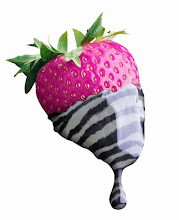here is the first draft for my term paper for my earth science class. it kinda sucks right now, but i am just looking for feedback and maybe additional information. if any of you guys are survivors or know someone who is, a firsthand account would be amazing. thank you so much for your help!!! (btw- my topic is Hurrican KAtrina)
On august 29, 2005, the lives of fifteen million people were changed forever. Many people died, were uninjured and evacuated from their homes, leaving everything behind as a result of a category five hurricane, Hurricane Katrina. She swept upon the gulf states wreaking havoc with her. Hurricane Katrina was one of the most devastating disasters in our recent history.
a Hurricane is an intense low pressure area that forms over warm ocean waters in the summer and early fall. They obtain their energy from water vapor which is evaporated from the ocean surface. Water vapor is able to fuel hurricanes because it releases the "latent heat of condensation" when it condenses to form clouds and rain, warming the surrounding air. Usually, the heat released in this way in tropical thunderstorms is carried away by wind shear, which blows the top off the thunderstorms. But when there is little wind shear, this heat can build up, causing low pressure to form. The low pressure causes wind to begin to spiral inward toward the center of the low. These winds help to evaporate even more water vapor from the ocean, spiraling inward toward the center, feeding more showers and thunderstorms, and warming the upper atmosphere still more. The showers and thunderstorms where all of this energy is released are usually organized into bands (sometimes called "rainbands" or "feeder bands"), as well as into an "eyewall" encircling the center of the storm. The eyewall is where the strongest winds occur, which encircle the warmest air, in the eye of the hurricane. This warmth in the eye is produced by sinking air, which sinks in response to rising air in the thunderstorms. The winds diminish rapidly moving from the eyewall to the inside of the relatively cloud-free eye, where calm winds can exist. Hurricane Katrina was a category five hurricane, reaching speeds of one hundred sixty-five miles per hour when it hit Miami, Florida.
The effects of Hurrican Katrina were devastating. The city most effected was New Orleans, Louisiana. Hurricane Katrina was the indirect cuase of some health problems of victims due to the oils spills, sewage leaks and chemicals that poisoned the flood water that swept throught the affected cities. The huricane also polluted groundwater reserves, which are a major source of drinking water. Most of the roads in New Orleans were destroyed as a direct result of the Hurricane. the levees(A levee is an embankment made to protect the city from water overflow) in the city of New Orleans were able to withstand the hurricane, but some levees were replaced with two foot thick walls, which collapsed during the hurricane.
Over one thousand, eight hundred people lost their lives due to Hurricane Katrina, and even more lost their homes and possesions. There was complete chaos after the hurricane due to lack of clean water, food, and sanitary hygiene, and many people suffered psychological stress and emotional turmoil due to the hurricane and the living conditions afterward. Many people lost, temporarily or permanently, their friends and family members as a result of Hurricane Katrina. 78,000 people were put into emergency shelters and many of the residents of New Orleans had to be evacuated to Texas.
Being prepared for a hurricane is the best way to protect yourself and your family from experiencing the devastating effects of a hurricane. Make a family plan so everyone in your family knows what to do in the event of a hurricane. Discuss things such as your home’s vulnerability to hurricanes. It is a good idea to have an out of state contact such a family member or friend that you will be able to go to in the event of a disaster. If you have pets, know what you are going to do with them in the event of a disaster. Create a disaster supply kit, filled with things such as non-perishable food, water bottles, flashlights, batteries and a first aid kit, along with any necessary medications for the people in your family. You also should have copies of important documents, toiletry items and a telephone. Being prepared is the best way to protect your family and yourself from the devastating effects of a hurricane.
thanks for sticking through that-- so not interesting, i know!! love you guys!!!
follow on twitter
other twitter
youtube channel
Monday, February 8, 2010
Subscribe to:
Post Comments (Atom)

No comments:
Post a Comment